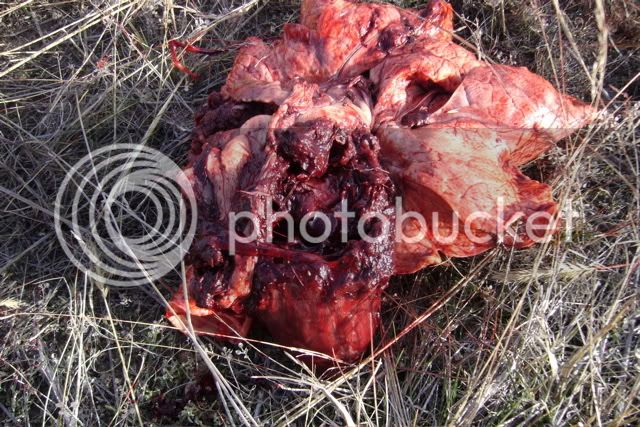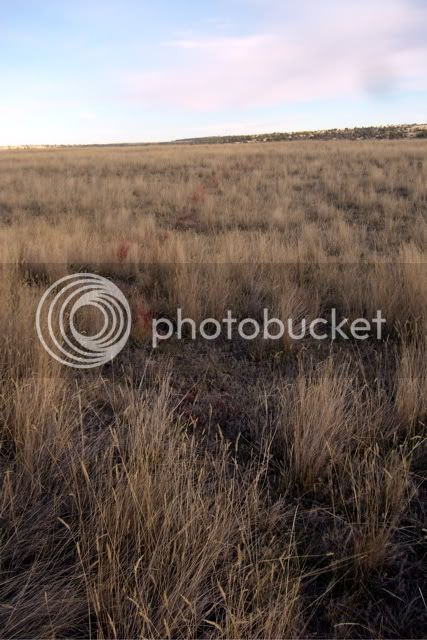woodguy said:
I'm not a hardcore traditionalist. I hunt with a muzzleloader because up here it's way more pleasant in muzzleloading season in Oct than centerfire season in Nov, there are way fewer hunters out and anyway I do about 1/2 my hunting in an area where centerfires are not allowed. I use a traditional caplock [TC Renegade] because I just can't consider the modern inlines as real firearms They don't fit the values I have for a well made gun. I mean if you have to have a plastic stock you could at least eliminate the casting seam and apply the tradtional standards for wood to metal fit to your wood to plastic fit.
I use conical bullets because they're accurate and effective in my gun. The downside is I don't get a through and through shot. The bullet always stops just below the skin on the farside of my deer. Given I grew up with the easy tracking provided by hunting in snow in centerfire season up here I'd apreciate having an exit wound to provide a better blood trail through the bush in Oct.
I've considered going to the sabot bullets in hopes the extra velocity of the lighter bullets would would give me an exit wound. Since most of my shots are at short range MOA accuracy isn't an issue so I'm not too worried about the effect of barrel twist. I am wondering how much I can step up my powder charge with the lighter bullets. Can I get enough velocity to get proper expansion from those jacketed bullets.
I asked a bunch of buckskinners at a local gunshow about this and the reactions ranged from total blanks to wanting to tar and feather me for heresy. Hope I can find either the info or where to look for it here.
Thanks
Jamie
I have only seen 3 round balls stay in deer on broadside shots. 1 of these was from a 54 pistol and it broke the upper leg bone, took out the heart and lodged under the hide. The 50 caliber from a 6" pistol (800+- fps MV) actually might have made it through if a true broadside shot but it was angled and passed though the heavy shoulder muscles and lodged at the offside hide at the diaphragm. The other was a broadside shot with a 45 rifle and 45 grains of FFG and it made it to the far side hide and was a one shot kill, taking out the heart.
The round ball actually penetrates very well and seldom sheds a lot of weight unless range is close and the velocity very high. I have gotten 30" or more from .530-.570 and .662 RBs from the occasional frontal shot.
This is the heart and lungs of a Mule Deer doe shot at about 40 yards with a .662 ball and 140 grains of FFg. Note the hole at the top of the heart. Ball entered just to one side of the windpipe with the deer facing me. Deer took this hit and still ran just over 50 yards. Massive blood trail though.
An exit wound does help in trailing and will IMO cause faster collapse but it depends a lot on the deer. Lung shot deer often produce a fine spray of droplets as they run.
Some simply won't fall down.
Bullets and sabots etc etc probably are not going to increase killing power on deer. I have shot deer with a wide range of bullets/calibers/velocities and find they all work about the same so far as "knock down" though my 16 bore (.662 ball) flintlock rifle does produce more obvious results than most.
Unless the spine or brain is shocked or struck the deer will likely stay on its feet. Though a friend killed a doe last year at 120 yards with a 45 RB and she went down at the shot. Ball broke a rib coming and going and he thinks it shocked the spine.
A 50 cal RB is near ideal for shooting deer. Light recoil and it does a nice job. Depending on the range powder charges from 60 to 90 grains are perfectly adequate. The larger charge of powder will have little effect on killing power it simply flattens the trajectory or gets the rifle into is "sweet spot" for accuracy.
Round balls and *expanding pistol bullets* will seldom if ever shoot through a deer from end to end. If shot from the rear neither will do much the the chest cavity unless then ball is hardened.
I would also point out that 240 gr HP and soft point 44 caliber bullets often penetrate *very poorly on game* and many if not most handgun hunters who shoot game larger than deer and even many deer hunters use hard cast blunt bullets such as the old Keith SWC. Some use heavier jacketed bullets 300 gr or so. But even these will often fail to penetrate better than a hard cast 250 gr and recoil is pretty nasty.
So using these as a projectile may or may not give you the results you want especially if driven too fast. Shooting large animals like Moose or bear with a 44 mag 240 gr jacketed bullet is a recipe for disaster. I would rather use a 54 RB.
Basically if you are getting unsatisfactory results with the 50 RB in deer shooting then you are probably expecting too much. Very, very few animals fall to the shot no matter what they are hit with, except as noted above. There are exceptions but they are very destructive and cause a lot of lost meat.
Learn your rifle, practice, place your shot this is the key to any hunting rifle. Take all the "knocked them off their feet" tales with a grain of salt, someone that claims this happens all the time is a liar or is shooting them high enough to shock the spine or uses a 25-06 with 87 gr bullets (for example) or has little experience. I suspect that less than 5% of the animals I have shot or seen shot have dropped to the shot. No matter the rifle used.
Some have run long distances after being shot in the lungs. 100-200 yards. A white tail can make 200 yards in just a few seconds. I shot a doe at about 30 yards with a 54, ball passed though the shoulders just behind and below the joint of the shoulder side to side missing all bone. She turned and bounded away as if unhurt and piled up after 10 "bounds" but made almost 200 yards across a hayfield. I was surprised she could take that heavy a hit and then run off. Had a lung shot mule deer run over 100 after a perfect lung shot with a 44-90 Sharps that was a real powerhouse shooting a 400 gr near pure lead blunt bullet and 92 gr of FFG.
If the deer is keyed up or frightened they are much harder to stop.
I think it was William Drummond Stewart who stated that it was easier to knock down an elk with with his 20 bore Manton than a Mule Deer.
Bullets have their own set of "disadvantages" higher pressure and/or longer duration of pressure, some like to slide away from the powder and form bore obstructions.
Don't be too quick to dismiss the PRB. It was not considered deficient until the current crop of conicals/cylidricals came on the market. Then it had to be deficient or there was no reason for shooters to buy the "new and improved" bullet. As a result a lot of complete BS was written to sell bullets and advertising for magazines.
Basically its the old "don't believe everything you read".
Dan






